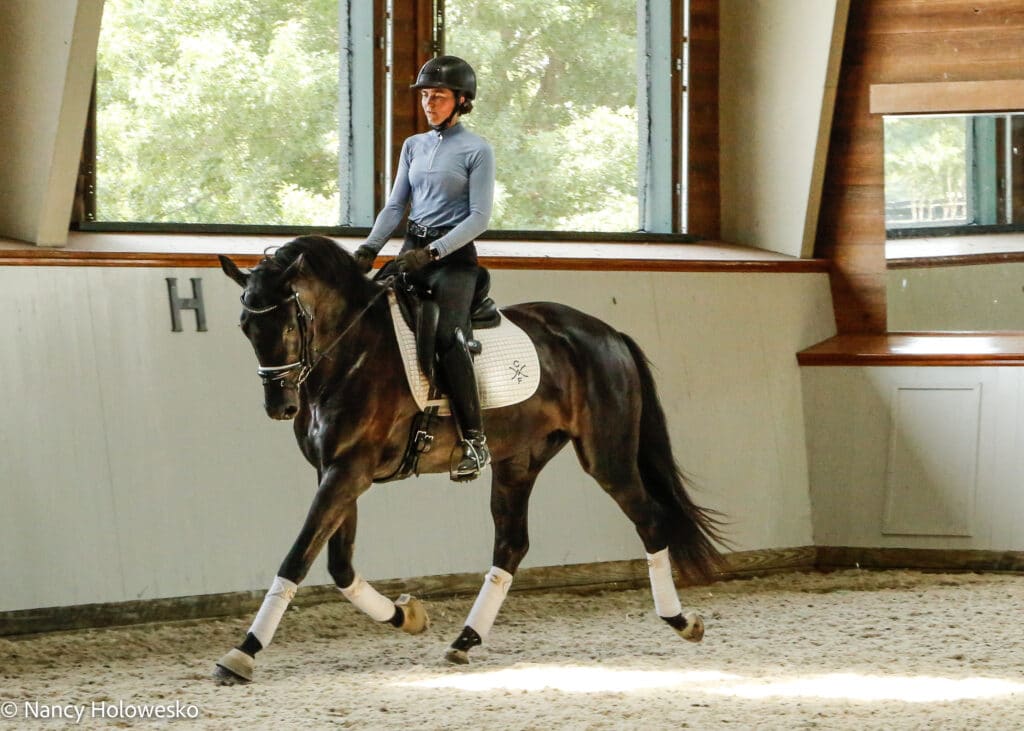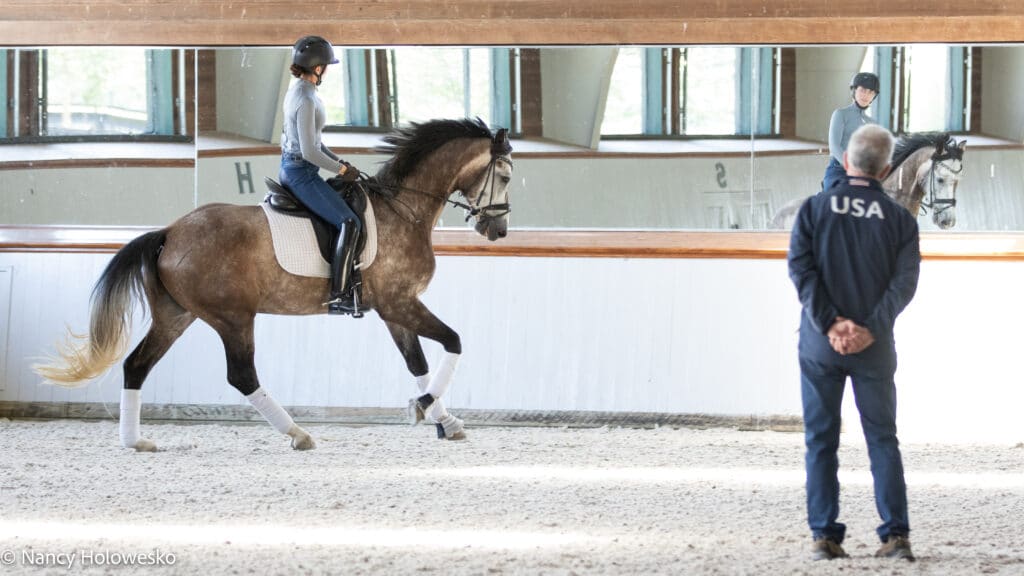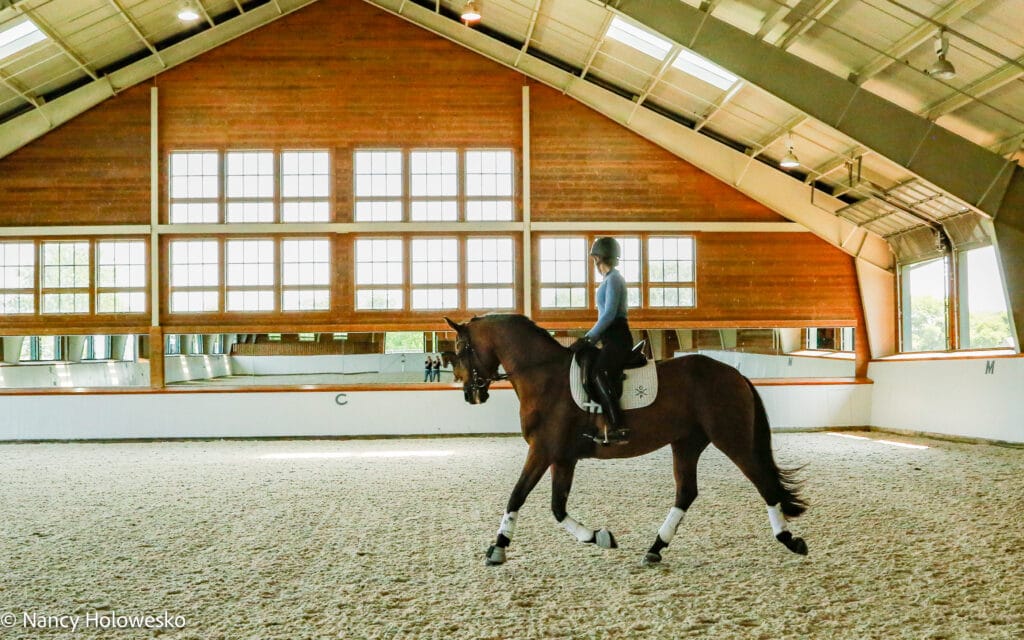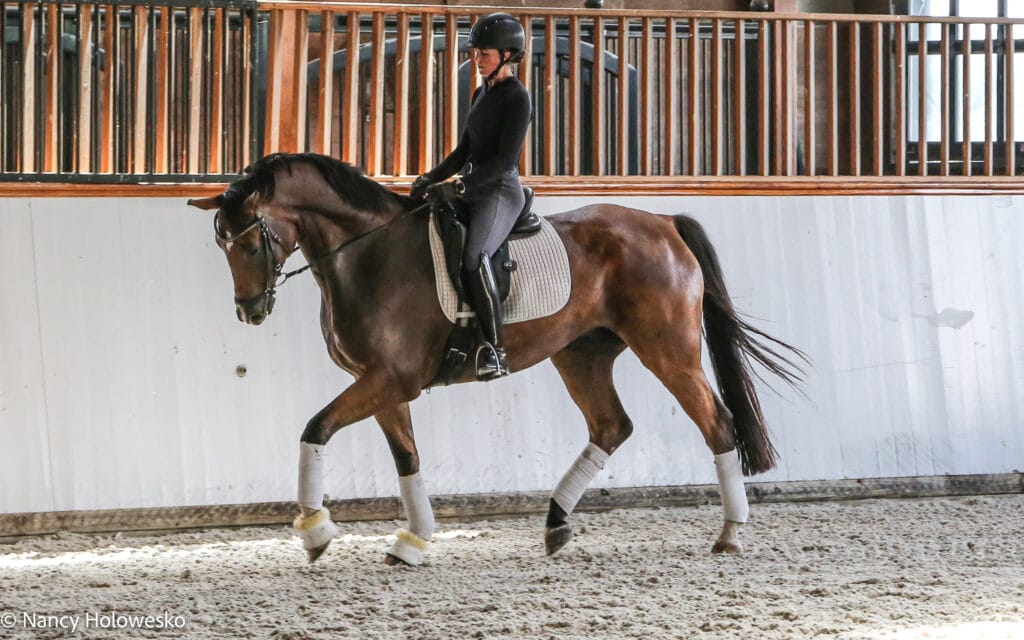Q&A with Noel Williams
Why train your horse with data? We asked Noel Williams about her experiences with the SaddleClip. Noel started using data-based training with her young dressage horses. She and her father and trainer, George Williams, train horses to FEI Grand Prix level. Curious about her experiences with data-based training? Read all about it in our Q&A.
Tell us something about yourself
My name is Noel Williams and I have been riding horses my entire life. I grew up with stallions and young horses. My dad, George Williams, trained high-performance dressage horses, so I really grew up around them. I am now the main trainer at Crosiadore Farm in Maryland, in the United States. It’s a small breeding farm with young horses and stallions. We train our horses to be FEI and Grand Prix horses.
Can you take us through a typical day at Crosiadore Farm?
Every day is different, but we have 15 horses in training. I ride 13 or 14 horses each day, and my groom and I train them together. A couple of our horses are newly broken in. We do a lot of groundwork with them before we start to ride them. We work with a really good trainer for groundwork to let the horses get used to the saddle and to having a human on top of them. Especially at the beginning, good horsemanship is extremely important when getting the horses started.
How is your father George involved in your training?
My father is always involved in training our horses. He’s worked with horses his entire life and he has a lot of experience with high-performance dressage. My dad started with Lipizzaner horses and he became an excellent dressage trainer. He lives a couple of hours away from me now, so we also do virtual lessons. In addition, I share the data from my SaddleClip so that he can see the results of my training.
What is the biggest benefit of data-based training for you?
I use the SaddleClip every time I ride so that I can follow the progress of my training. That means that I use it on about 14 different horses. That’s a lot of data, but it is really nice to see the differences between the individual horses and to do a check-up after each ride.
It’s really helpful with daily rides and validation. It actually gives you the confirmation you need when you have doubts about balance. Seeing the data in the app helps you to clean things up right away to prevent later injuries. Before you can even feel or see the imbalance.
I think it really helps to train them for symmetry, especially with the young horses. The sensor gives me insight into the horse’s balance and symmetry. They have to be even and forward on both reins. Straightness is really important. The SaddleClip helps to make sure that, as I develop them, I am not letting one become a little bit weaker on one side, for example. It is helping me develop my horses evenly and correctly.
Have you found anything unusual or surprising about data-based training?
One of our stallions started to have minor behavioural issues. He had an infected tooth on the right side that we had removed. But when we started training him again, he was really difficult to ride. He tends to hover with the left hind leg. His right side was slower and weaker and he had difficulties bending right. And that’s where he’d had the infected tooth, on the right side. When we started using the SaddleClip on him, the data supported that. But that wasn’t the biggest surprise.
What I found really surprising is that the days when the data shows an imbalance are the same days when he has behavioural issues. He was getting a little bit stressed when he was unbalanced. On days when I can keep him more even, his behaviour is much better. Now that we know this, he’s much more consistent. When you have a horse that’s behaving badly, data-based training with the SaddleClip can be really helpful.
What has using the SaddleClip taught you? Has it changed your training?
The SaddleClip confirms my perceptions, and it gives me early warnings for possible injuries and insight into imbalances. When I am riding alone, it helps me to confirm or correct my perceptions. For example, riding slower with one of my horses gets him more balanced. Normally we ride our young horses a bit more forward, but with this horse it’s better to slow down. This gave him a lot more balance and push-off!
How do you incorporate data into your training?
I am now focusing on symmetry and balance. After my ride, I look at the data for rhythm, push-off and symmetry in the Equestic App. It is really interesting to see if something changes in the data when I try something different: for example another saddle or a change in my training, like riding more or less forward. I use the results and what I learned in my next training session.
Do you have some final advice for our readers?
The Equestic SaddleClip has proven useful in the development of our horses. It’s helped us to make sure that they are trained absolutely correctly. Symmetry is crucial for horses, and the SaddleClip helps to ensure that my horses are developed evenly and symmetrically for absolute straightness. This allows for better collection and hopefully for more Grand Prix horses. And don’t worry, it even helps you if you are not training your horse for Grand Prix. The main goal is to keep your horse healthy and balanced!
Are you curious about using a training sensor in your horse training? Check out our product page and read all about the SaddleClip.










